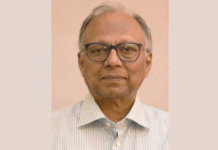Unlike most political ideologies whose adherents by and large agree with the definitional tags attributed to their respective ideologies and ideologues, Political Islam is more of an academic concoction.
It works as an analytical umbrella under which political analysts lump various forces that claim to be using historical Islamic texts and traditions to achieve modern political goals.
One is not quite sure exactly when the term Political Islam was invented, but there is agreement among many academics, studying politics in the Muslim world that the word most probably emerged in the 1940s in Europe to define anti-colonial movements that described themselves to be religious/Islamic in orientation.
Though it might have some roots in anti-colonial movements that emerged among the Muslims of India and Arabia in the 19th century, Political Islam is basically a 20th century phenomenon. Its first main expression is believed to be Egypt’s Muslim Brotherhood that was formed in 1927.
Even though as a political tendency, Political Islam (to analysts) covers a wide range of Islamic political movements involving different sects, sub-sects, nationalities and leftist, as well as rightist rhetoric and narratives, it is the commonalities in these varied movements that makes analysts study and define them as a single ideological entity that they call Political Islam.
So what are the basic, commonly held aspects of Political Islam?
• Reaction against foreign (especially Western) political and cultural influences in Muslim societies.
• Offering political and social alternatives to replace Western political concepts and social values.
• The alternatives are based on an understanding of history, society, economics and society culled from modern-day interpretations of a (largely imagined) ‘golden age of Islam’.
• Adoption of modern technology because it does not have any particular values attached to it and can thus be tagged and used for the promotion of Islamic values.
• Introducing and infusing what are believed to be Islamic precepts of economics and politics.
Till about the late 1960s, movements associated with classical Political Islam were largely intellectual pursuits with limited political influence.
Nevertheless, they were seen with suspicion, even by those movements and groups that adopted the main aspects of Political Islam but fused them with leftist ideologies.
Thus, during the Cold War the central theological and political tussle in most Muslim countries was not exactly between ‘Islamists’ and secularists, or between religious political groups and communists/Marxists.










